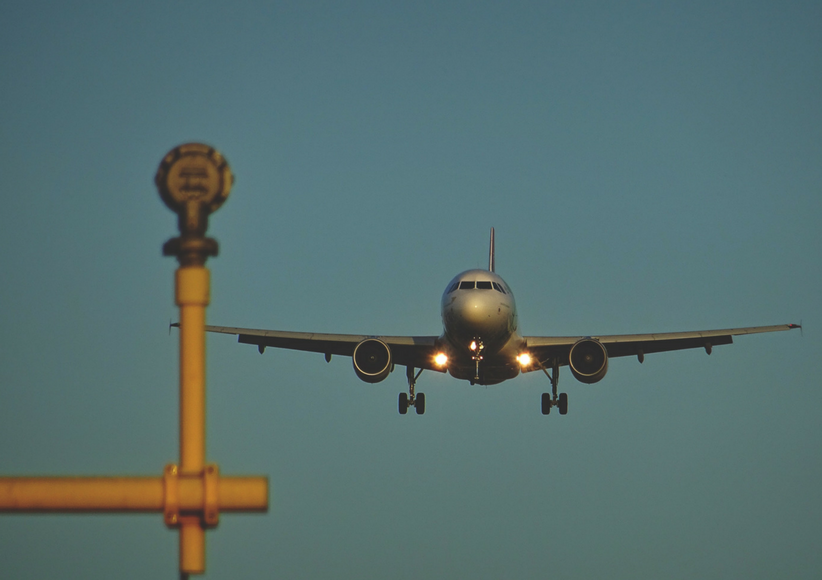Strategy
May 02, 2018
Benchmarking Airline Customer Experience: Pre-Trip Experience Lessons

What makes an air travel experience positive? This is not an easy question for marketers, business strategists, and other customer experience professionals to answer. Air travel is a notoriously complex process that involves multiple organizations, processes, and touchpoints over the course of several days, if not weeks. Yet the difficulty of answering this question is exactly why grading the airline customer experience is so valuable for these companies.
Customer experience professionals have several tools at their disposal for evaluating “success.” While Net Promoter Score is great for tracking how customers perceive initiatives and usability studies are insightful when trying to understand exactly how customers interact with a product, none of these approaches give the full picture. A wide-ranging framework applying a variety of inputs gives invaluable insight into how your product stacks up against the competition.
In “Benchmarking Airline Customer Experience: 7 Steps to Building a Framework,” we described the process our Credera team used to create a framework for evaluating the customer experience across several U.S. airlines. In this article, we divulge some key lessons from the execution of the framework completed by flying the selected airlines across the country.

With so many elements to assess across such an expansive customer journey, our analysis yielded significantly more insights than we could squeeze into one article. For this reason, our insights here focus on lessons from only one phase of the customer journey: the pre-trip phase. We gathered four key lessons from this part of the journey:
1. Pre-Trip Communications Are a Missed Opportunity
Prior to our flights, we signed up for all offered communications from each airline. While the quantity and quality of pre-trip communications vary greatly from airline to airline, there is room for improvement across the industry. We broke up pre-trip communications into three categories:
Booking confirmation messages
Pre-trip marketing messages and upsells
Travel preparation messages
While each airline’s confirmation emails were roughly equivalent, the airlines began to differ when it came to upsell communications and travel preparation communications, particularly check-in reminders. Spirit Airlines sent a single action-oriented check-in email with clear text instructions and a large button to complete check-in online. By comparison, a different ultra-low-cost carrier sent two emails around the time of check-in—one was a re-sent confirmation email and the other was from a different email address than their other communications. The subject lines of these two emails did not mention check-in, meaning busy customers could easily miss these critical communications. The best check-in reminders are distinct, with action-oriented language and information about hotels, rental cars, and other ancillary services to cut down on superfluous marketing communications.
Emails are not the only pre-trip communications. Most of the legacy and regional carriers offer push message functionality, but the quality of this experience was inconsistent. Several airlines claimed to send push messages for check-in reminders, but our team never received messages from some of these airlines. In another instance, we received a push message about a flight delay while we were sitting on the tarmac; the timing of this message only reinforced the negative experience. While these issues could have been exacerbated by phone settings or service, the consequence was a confusing experience and missed expectations.
Key takeaway: Use action-oriented pre-trip communications to streamline trip preparation, but be careful not to set expectations you are unable to consistently meet.
2. The Best Airline Mobile Apps Prioritize Travel Features
When thinking about airline mobile apps, it is easy to get overwhelmed by the sheer number of features. Many of today’s airline apps include terminal maps, in-flight entertainment options, currency converters, and several other features that are flashy, but less critical to the travel experience. Considering the amount of information needed to effectively plan travel, the best mobile apps consolidate the most important information, such as upcoming flight times, travel advisories, and confirmation numbers.
When designing the mobile experience for travel, leading airline apps emphasize relevancy and consolidation. Some standout apps tailor the home screen to the stage of the travel journey. For example, American Airlines and Southwest Airlines update their home screens to showcase detailed flight information, including check-in links and boarding passes, shortly before a trip. The United Airlines app even lets the user pick which modules to display on the home screen. With this added flexibility, a traveler anxious about their tight layover can choose the airport map, while another flyer debating whether to bring their iPad can choose entertainment options.
Poor mobile experiences force the user to navigate to different pages to find the information they need. What information might a user need before a trip? They need flight times to share with friends, weather to inform packing, and ancillaries to enhance their trip (e.g., hotels, cars, entertainment, etc.). Prioritizing this information at the pre-trip stage means users do not have to navigate several screens to find the information they need, creating a positive experience.
Key takeaway: Make sure your mobile application makes it easy for users to access the most relevant information tailored to their stage in the customer journey.
3. Integrating Information From External Sources Amplifies Value
Focusing on the most relevant mobile features does not mean that flashier functions are not valuable, especially when they streamline the travel experience and let customers use one app instead of many. For instance, one leading airline mobile app displays driving time to the airport on the day of travel so travelers know when they need to leave to arrive on time. Notably, none of the apps we analyzed included security wait times, which could be a valuable feature for the airline willing to invest in integrating this data.
Other airline mobile apps, such as United Airlines, include integrations with ride-sharing services, which can greatly simplify the drop-off and pick-up process at the airport. Rather than spend time researching exactly where they need to be dropped off, airline passengers can order a ride with the correct destination pre-loaded in their ride-share app.
Other examples include displaying weather information and details of the airplane’s flight path for the day in the app. These integrations do not have to solely reside in the mobile app. Consider using email and push notifications to communicate critical information that needs to stand out. These types of integrated features and information are not required to create a positive pre-trip experience, but they can make a good experience great by proactively simplifying the planning process for the customer.
Key takeaway: Streamline the customer journey for your users by packaging valuable and relevant information from partner travel companies within your mobile app and direct communications.
4. Consolidate and Personalize Upsell Opportunities to Reduce Clutter
Upsells and ancillary products and services are, for better or worse, a major part of the pre-trip travel experience. Upsells are a powerful revenue-generator for most airlines; they offer high margins and can easily be targeted at an interested audience. In fact, the three U.S. legacy carriers, American, Delta, and United, collectively made $16.2 billion in ancillary revenue in 2016. While this is great for airlines, it does not always create a positive experience for customers.
However, upsells and ancillaries can be valuable for travelers looking to book all of their travel plans through one place (or one loyalty program). They also are a great way to get specific luxury benefits (e.g., priority boarding, extra legroom, etc.) without paying for a full first-class experience. That’s the good. The bad is how these products are often marketed to travelers.
The airlines in our study took a variety of approaches, but the best follow the same approach as outlined in the mobile information section. Consolidating ancillaries in the check-in process or in a single pre-trip email creates a one-stop shop for add-ons that accelerates what could be a drawn-out process. The best airlines in this category also let travelers purchase checked bags and in-flight services in this same step. Furthermore, personalizing ancillary offers based on a customer’s previous purchases or existing travel plans ensures marketing efforts are most valuable for both airlines and customers. For example, airlines can avoid pushing ads for priority boarding or a hotel when a customer has already purchased these products.
Key takeaway: Customers are sensitive to numerous overwhelming marketing promotions and upsells; to combat this, airlines should consolidate and personalize ancillary offers.
Break Through the Noise
While the specific findings illustrated in this article focus on the airline industry, the primary themes of relevancy and convenience apply more generally. Today’s consumers are overwhelmed by thousands of marketing messages each day; it is not just airlines that need to find ways to break through this noise and create better, more personal experiences. Benchmarking and evaluating your customer experience and how it compares to your competitors is the best place to start this journey.
Interested in finding out how your customer experience stacks up to the competition? Want to learn more about Credera’s Strategy & Operations offerings and experience? Reach out to us marketing@credera.com to learn how we can help!
Contact Us
Let's talk!
We're ready to help turn your biggest challenges into your biggest advantages.
Searching for a new career?
View job openings
